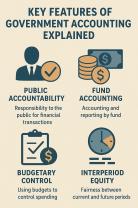How do fixed index annuities make money?
Fixed index annuities (FIAs) are financial products that offer the potential for earning interest based on the performance of a specified financial index, such as the S&P 500. Here's how FIAs make money for investors:
Principal Protection: One of the key features of FIAs is that they offer principal protection. This means that the initial investment (the premium) is typically guaranteed not to decrease due to market fluctuations. The insurance company issuing the FIA assumes the risk of loss.
Interest Crediting: The interest earned on an FIA is determined by the performance of the chosen financial index. While your principal is protected, your earnings are linked to the index's performance. If the index performs well, you can potentially earn a higher interest rate. If it performs poorly or experiences losses, your interest may be limited or even zero.
Participation Rate: FIAs often have a participation rate, which is the percentage of the index's gain that you can participate in. For example, if the participation rate is 80%, and the index gains 10%, your credited interest would be 8% (80% of the gain).
Interest Caps: To limit the amount of interest paid to the investor, insurance companies may impose an interest rate cap. This means that even if the underlying index performs exceptionally well, your interest rate is capped at a predetermined rate.
Spread or Margin: Some FIAs use a spread or margin to determine the credited interest. This means that a certain percentage (the spread) is subtracted from the index's return to determine your interest rate. For example, if the index gains 10% and the spread is 2%, your credited interest would be 8%.
Annual Resets: Many FIAs have annual reset periods. At the end of each year, the interest earned is locked in, and a new year begins. This means that your gains are protected from market downturns during the reset period.
Guaranteed Minimum Interest Rate: Even if the index performs poorly, FIAs often come with a guaranteed minimum interest rate. This ensures that you won't earn less than this minimum, regardless of the index's performance.
Surrender Periods: FIAs may have surrender periods during which you agree not to withdraw your money. If you withdraw funds during the surrender period, you may incur penalties or surrender charges.
The mechanics of FIAs can be complex, and they vary by product and insurance company. It's essential to thoroughly understand the terms, conditions, and potential risks associated with any FIA you're considering. Additionally, investors should carefully consider their financial goals and risk tolerance before investing in fixed index annuities, as they are long-term financial products designed for retirement planning and may not be suitable for everyone. Consulting with a financial advisor or insurance specialist can help you make an informed decision regarding FIAs.
Making Money with Fixed Index Annuities: A Financial Strategy
Fixed index annuities (FIAs) can be a financial strategy for making money in retirement. They offer a combination of growth potential, income protection, and downside protection.
Understanding the Mechanics of Fixed Index Annuities
FIAs are insurance contracts that credit interest based on the performance of an underlying index, such as the S&P 500. They offer a guaranteed minimum interest rate, but they also have a cap on how much interest can be credited each year.
Investment and Growth Potential in Fixed Index Annuities
FIAs can offer investment and growth potential, but it is important to understand the risks and limitations. FIAs are not direct investments in the stock market, so they do not offer the same potential for high returns. However, they can offer lower risk and more predictable growth than traditional investments, such as stocks and bonds.
Risks, Benefits, and Considerations in Annuity Investments
Annuity investments have both risks and benefits. It is important to weigh the pros and cons carefully before deciding if an FIA is right for you.
Some of the risks of FIAs include:
- Fees: FIAs have a variety of fees, which can reduce your returns.
- Surrender charges: If you withdraw money from your FIA early, you may have to pay a surrender charge.
- Lower returns than traditional investments: FIAs do not offer the same potential for high returns as traditional investments, such as stocks and bonds.
Some of the benefits of FIAs include:
- Guaranteed minimum interest rate: FIAs offer a guaranteed minimum interest rate, which can provide downside protection.
- Income protection: FIAs can provide a stream of income in retirement.
- Tax-deferred growth: FIAs can grow tax-deferred, which can help you save money on taxes.
Planning for Financial Security with Fixed Index Annuities
FIAs can be a part of a financial plan for retirement. They can help you to achieve your retirement goals, such as generating income and preserving your capital.
If you are considering an FIA, it is important to speak with a financial advisor to determine if it is right for you. A financial advisor can help you to understand the risks and benefits of FIAs and to choose the right product for your needs.
Here are some additional tips for planning for financial security with fixed index annuities:
- Start early. The earlier you start saving for retirement, the more time your money has to grow.
- Contribute regularly. Even if you can only save a small amount each month, it will add up over time.
- Rebalance your portfolio regularly. This will help you to maintain your risk tolerance and to ensure that your portfolio is aligned with your retirement goals.
- Review your financial plan with a financial advisor regularly. Your financial advisor can help you to make sure that your plan is on track and to make adjustments as needed.
Fixed index annuities can be a valuable tool for retirement planning. By understanding the risks, benefits, and considerations, you can determine if an FIA is right for you.













